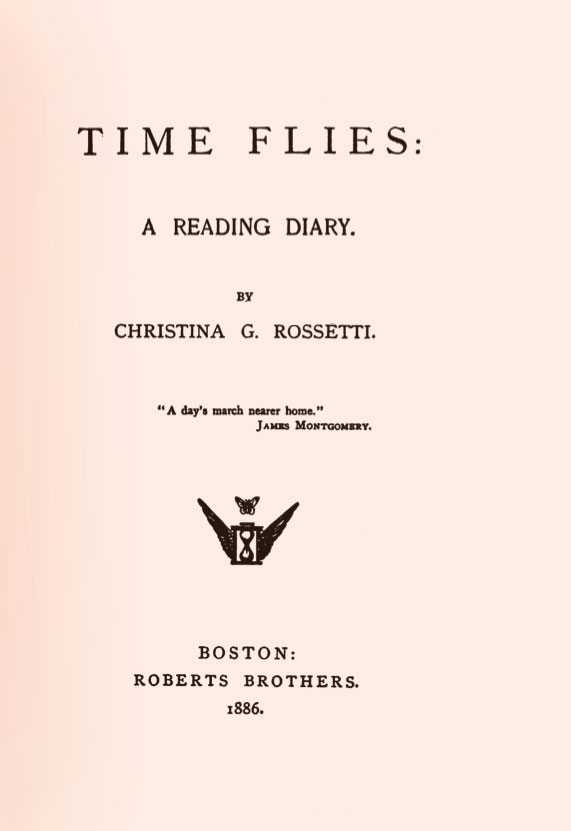What Is the Bottomless Pit?

Title page of Time Flies
Today's Devotional
The bottomless pit mentioned several times in the Apocalypse is not (I believe) named in any other Book of Holy Scripture….
Whatever other idea we may form of the bottomless pit, whatever other feature we may think to detect within its undefined horror, two points stand out unmistakably: as a pit it is a place into which to fall; as bottomless, it appears to be one within which to fall lower and lower for ever and ever.
Herein lies one distinct thought for ourselves: an awful thought. A deep fall, indefinitely deep, so long as any bottom at any depth underlies the lapser, must at length be arrested and must stop. However mangled or shattered, and on whatever floor landed, the wretch cannot cease there to lie: self-destroyed, indeed, yet accessible to Mercy and Help if these deign to look so low, and lift with recovering hands, and carry home on shoulders rejoicing.
But in the bottomless pit I see a symbol of that eternal antagonism and recession by which created free-will seems able to defy ... even the Almighty Will of the Creator. At a standstill anywhere, though on the extreme boundary of time or space, the sinner might be overtaken by the pursuing Love of God: but once passing beyond those limits, eternity sets in; the everlasting attitude appears taken up, the everlasting recoil commenced.
Beyond the grave, no promise is held out to us of shipwreck, great fish, dry land, to turn us back towards the presence of God from our self-chosen Tarshish.
About the author and the source
Christina Rossetti (1830–1894) earned recognition as one of England’s finest poets. Unlike her more sensual brother, Dante Gabriel Rossetti (leader of the pre-Raphalite painters) she was deeply imbued with Christian sensibility and wrote such books as Called to be Saints. Today’s selection is from her daily readings, Time Flies.
Christina Georgina Rossetti. Time Flies, a Reading Diary. Boston: Roberts Brothers, 1886.





